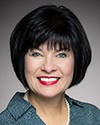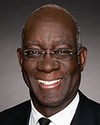I think what would be helpful for the committee is to get a response back in writing that says that if this has changed, why it has changed and whether a gender-based analysis was done on it. I think that's really important for us.
I was very pleased to see that the women veterans advisory committee was announced today. There are a few names I wish were on there that are not, but we'll talk about that at a later time.
I have a few questions. One of them is around the terms of reference.
The report talks about having quarterly meetings. We know that a federal election is going to be happening next year. We know that these folks have to get together and learn a lot. I'm wondering if you can talk about whether there is any focus on having more meetings prior to the election so that they can start getting up to speed.




